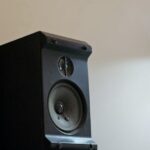10 Creative Home Theater Ideas To Transform Your Space
10 Creative Home Theater Ideas To Transform Your Space

What good is a home theater if you aren’t getting the most out of it?
As unfortunate as it may be, the fact of the matter is many aren’t fully utilizing their system like they could be. Chances are, there’s improvements even now you could be implementing into your setup.
So with that being said, here’s my gift you; 10 home theater ideas you can use today to elevate your surround sound experience.
Get A Surge Protector
Testing How A Room Sounds With The Clap Test
Not Happy With The Way Your Speakers Sound? Try A Mirror
TV Seem Too Bright? Adjusting Lighting May Help
Get A Smart Universal Remote
Is The Bass In Your Room Lacking? You May Want To Try 2 Subwoofers
Is There A Mishmash Of Wires? Labeling Might Be A Smart Idea
Optimizing Your TV’s Picture Quality
The Furniture Matters
Are Your Wires In The Way? You Could Always Try A Wire Tacker
Using A Surge Protector
I can’t stress this enough; surge protectors can be a big help.
Why though?
Well think of it this way. When a storm rolls in and lightning strikes, what do you think happens when your electronics aren’t protected?
That’s right, they run the risk of getting fried. Don’t think that happens all too often? Well it does.
My last setup got shorted because I was of the same mindset that that doesn’t ever really happen, but lo and behold….yeah…wasn’t happy.
So, I just want to prevent your new toys succumbing to the same fate mine did. A surge protector can be a big help in preventing that from happening.
It’s certainly one of the many mistakes that people often make which I also talk about here.
https://easyhometheater.net/25-of-the-worst-home-theater-mistakes
ALESTOR Surge Protector with 12 Outlets and 4 USB Ports
Testing How A Room Sounds With The Clap Test
What in the world is a clap test?
In short, a clap test is a really basic test without equipment, used to get an idea of how sound interacts with a room. When you move into a new place devoid of furniture, chances are it’ll sound pretty empty.
The point of this test is that it will allow you to to gauge how much acoustical treatment a room needs, without the usual hassle.
How do you do it though?
Simple. First go outside, making sure you’re standing away from any reflective surfaces.
Then you’re going to clap once, and make note of how it sounds.
What you should be listening for is a lack of any kind of echo. Then go back inside, and clap again. This time you’ll likely hear a slight one.
The more carpeting and furniture you add to a room, the less pronounced it’ll be. This is because the softer material absorbs sound rather than reflecting it like a hard surface would.
A room with hardwood flooring will have a sound signature harsher than that of a carpeted one.
That’s why ideally, when you clap in a room that has adequate treatment, there won’t be an echo at all. Keep this in mind with regards to your setup.
Not Happy With The Way Your Speakers Sound Now? Try A Mirror
This is another cool trick you can try to improve your sound.
For this you would need 2 people and a mirror.
With one person sitting down where the content will be primarily watched, the other person would hold the mirror and walk slowly along the wall.
Do this until the person sitting down can see the reflection of one of the speakers. When you see it, stop, and make note of where exactly that spot is.
Then repeat that walk for the other 2 speakers and mark those.
The idea here is that the point of visual reflection in the mirror is also where the sound from your speaker is reflecting to your seating position.
By placing acoustic panels in those spots you marked, it’ll help dampen the unwanted sounds that could be affecting your audio quality. With doing this you may notice a difference immediately.
Calibration of course helps too though there’s a few things with regards to mistakes you’ll want to keep in mind.
https://easyhometheater.net/25-of-the-worst-home-theater-mistakes
12 Pack- Acoustic Panels Studio Foam Wedges
TV Seem Too Bright? Adjusting Lighting May Help
A common issue with TVs is that they aren’t typically calibrated right out of the box. Many displays are set with the backlight at the maximum value possible.
Leaving it like that in a darker room could bring about eye strain. To offset this juxtaposition of light and dark, try a backlight that’s 60 percent of the max.
I’ve personally found that to be the sweet spot for average day and nighttime viewing though it could be different for you depending on your viewing conditions.
Another thing you may want to try is an ambient light. An ambient light is basically a strip of lights that go behind the screen with the goal of reducing eye strain.
The cool thing is they come in a bunch of colors, and it adds a certain sense of character to the room overall.
Here’s how to optimize your television as well which can certainly help with picture quality.
https://easyhometheater.net/how-to-optimize-your-tv
Luminoodle Color Bias Lighting
Using A Smart Universal Remote
If you have a lot of devices in your home theater then by default, you’ll also have a lot of remotes. So it only makes sense then to make it easy on yourself and simplify it.
A universal remote is helpful because you can control all of your components with one remote, along with added bonus of not worrying about losing several of them.
Now a smart universal remote is even better because they usually have a mini screen and expanded support for more devices.
Whatever you pick, these nifty little devices can make your things a heck of a lot easier with regards to home theater (and who doesn’t want that?)
I even did a piece on the best ones to go with to make your decision even easier.
https://easyhometheater.net/the-best-universal-remotes
Logitech Harmony 650 Infrared All in One Remote Control
Is The Bass In Your Room Lacking? You May Want To Try 2 Subwoofers
If you have more than one seating position, 2 subwoofers might be something you want to try.
Like I’ve mentioned before, there are multiple dead spots in any room. Unfortunately, if someone happens to be sitting in one of these nulls, they might not hear any bass at all.
However, with an extra sub, it can help with the unevenness of bass in the room.
When properly setup, it can help add a lot of depth to your overall sound quality.
Funnily enough, I actually talk about this very topic here.
https://easyhometheater.net/setting-up-2-subwoofers
Is There A Mishmash Of Wires? Labeling Might Be A Smart Idea
If you haven’t put much thought into wire labels, then you might want to. With all of the extra HDMIs and stuff that you’ll likely acquire over time, it’ll probably start to get confusing.
But by putting labels on your wires, you’ll always know what they’re connected to when you have a bunch of things going.
But you’ll also want to keep them out of sight for both aesthetic and practical purposes, so here’s a few tips on how to easily do that.
https://easyhometheater.net/hiding-speaker-wire-solutions
Optimizing Your TV’s Picture Quality
Most people lose out on the full capabilities of their televisions because they aren’t aware that it’s even a thing, let alone what improvement they would get.
But if you’re noticing your picture looking washed out or off, or you’re not sure which color temperature to use, optimizing or even calibrating your display can provide a very noticeable improvement.
https://easyhometheater.net/how-to-optimize-your-tv
The Furniture Matters
This kind of ties into what I was talking about before; the furniture you get matters.
When designing your home theater, opt for chairs with as much cushioning as possible. Obviously comfort is a factor, but the sound will be much better in a room with plush furniture as well.
Speaking of plush, one really cool idea that springs to mind is a bean bag chair!
They’re incredibly comfortable, while definitely adding a sense of character any room.
But if you’re still curious on exactly why the furniture in a room would matter, definitely have a look at this interesting read below.
https://easyhometheater.net/home-theater-seating-ideas
Sofa Sack – Bean Bags Bean Bag Chair
Are Your Wires In The Way? You Could Always Try A Wire Tacker
I like using wire tackers because they help keep annoying wires out of the way, and they’re not hard to use.
Best part is it functions like a regular stapler, so there’s nothing really complex here. They’re another really helpful tool to have in my opinion.
With that though, that about wraps it up for this one.
These are 10 concepts anyone designing a home theater should keep in mind..
We often get so caught up in the excitement of having a new setup that we forget to really make the most of it.
But with these steps, you’ll be on the your way to surround sound bliss.
That’s it for now, see you next time.
About Me

Jay
Hey everyone it’s nice to meet you. I'm Jay, writer & founder of the site Easy Home Theater. I've been with this hobby of home entertainment for many years now. I decided to create this site to be a helpful resource, and share everything that I've learned from personal experience with you. I also happen to be a huge gamer, lover of all things tech related, and a major fitness buff (love weightlifting)
Contact: Contact Jay
Facebook: https://www.facebook.com/Easyhometheater/
X: https://x.com/easyhometheater
Pinterest: https://www.pinterest.com/easyhometheater/pins/
Instagram: https://www.instagram.com/easyhometheater/
Followit: https://follow.it/easy-home-theater
Bluesky: https://bsky.app/profile/easyhometheater.bsky.social
8 Comments so far:
-
-
Yeah there’s lots of little fun tricks out there lol. Glad I helped honestly
-
Wow! I sure learned a lot! I especially like your suggestions to combat eye strain. I never even thought of having a light near the TV to help with this. I am also interested in learning how to calibrate the TV.
-
Nice! Yeah eye strain is a big issue, and one that many aren’t sure how to alleviate. But about the calibrating thing, I actually did an article on that here https://easyhometheater.net/how-to-optimize-your-tv
-
-
These little tricks really make or break the system. I recall getting frustrated trying to make my newly purchased audio systems sound outstanding, but I realized, the interior design of the room is a deciding factor. Great post.
Thanks-
Yeah ironically the room ends up being what needs help a lot of times. No problem though!
-
-
Great article, very helpful tips.
-
Hey I’m glad you liked it!
-







Thanks so much for the great ideas, I’ll definitely be using them in my own home theatre. Who would have thought using mirrors to improve your sound, fantastic advice. I have bookmarked your website and will be visiting regularly.